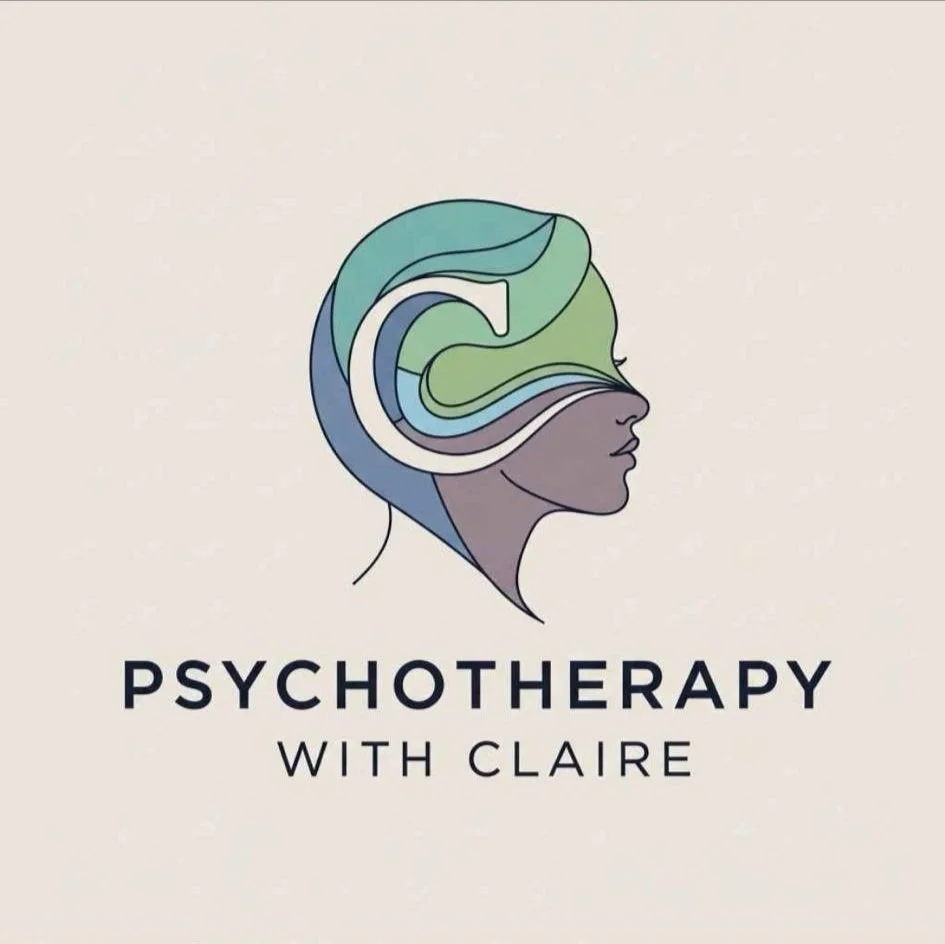The Body Remembers: Understanding the Nervous System in Healing
It all begins with an idea.
We often think of emotional distress as something that happens in the mind. Yet many people notice that their body responds long before their thoughts catch up. Perhaps your heart races, your chest tightens, your stomach drops, or your muscles tense.
This is because the nervous system remembers.
When we have lived through stress, trauma, or emotional overwhelm, the body learns to stay prepared for danger. It holds this readiness in muscles, breath, posture and sensation.
This is not a failure.
It is your system trying to protect you.
Why It Can Feel So Intense
When the body senses something that feels familiar to past pain, it can react automatically, even if you logically know you are safe. This is why reassurance or reasoning doesn’t always help. The reaction isn’t coming from the rational mind. It’s coming from a place that learned to keep you safe.
How Therapy Helps
In therapy, we move slowly, helping your nervous system learn that safety is possible now. We use gentle grounding approaches, such as:
feeling the body supported by the chair
noticing the breath without trying to change it
orienting to the environment
using small movements to settle the body
As the nervous system feels safer, thoughts soften, and emotional balance becomes more possible. The work begins in the body, not through effort or force.
Over Time
You may notice:
more pauses before reacting
a greater sense of inner steadiness
a feeling of being more “in yourself”
connection where there was numbness
softness where there was tightness
Healing does not rush.
It unfolds, gently, in its own time.
If Your Body Feels On Alert
You are not too much.
You are not broken.
Your nervous system learned to protect you.
And together, we can help it rest.
→ You are welcome to reach out when you’re ready.
Being With Your Experience More Kindly: A Gentle Introduction to Mindfulness-Based Cognitive Therapy
There can be times when our thoughts feel busy or heavy, and emotions seem to return in familiar patterns, even when we are trying our best to move forward. We might find ourselves worrying, feeling low, or getting caught in self-criticism, without quite knowing how we got there.
Mindfulness-Based Cognitive Therapy (MBCT) offers a gentle way of meeting these experiences. Instead of trying to get rid of what we feel or change our thoughts straight away, MBCT helps us be with our experience in a softer, more understanding way. This can create a greater sense of steadiness, space and choice.
It is not about clearing the mind or getting it “right”.
It is about learning how to relate to ourselves with more warmth and care.
Why Mindfulness Matters To Me
I have been practising mindfulness in its various forms for around 20 years, through meditation, movement, breath awareness and quieter moments of simply paying attention to life as it unfolds. Over time, mindfulness has helped me meet my own emotional experiences with more patience, gentleness and curiosity. Not to fix myself, but to be with myself differently.
This personal relationship with mindfulness forms the foundation of how I work in therapy.
It is something I share from lived experience, not from a distance.
When I introduce mindfulness to clients, it is offered slowly, with respect, and always shaped to your needs.
What MBCT Is
MBCT brings together:
Cognitive therapy, which supports us in recognising the patterns in our thinking
Mindfulness, which helps us stay present and grounded in the body
Rather than challenging or arguing with thoughts, MBCT supports us in noticing them as they arise. This gentle shift in awareness can soften the intensity of difficult emotions and help us respond with greater kindness and clarity.
MBCT is recommended by NICE and widely used in the NHS, especially for:
Recurrent depression
Anxiety
Emotional overwhelm
Preventing relapse after recovery
It is a well-researched and effective approach to ongoing emotional wellbeing.
Supporting Different Emotional Experiences
Mindfulness can support many different emotional presentations. For example:
With anxiety, mindfulness can help soften the urge to escape feelings.
With depression, it can loosen the pull of rumination and inner criticism.
With trauma, it is introduced slowly and gently, supporting a sense of safety.
With stress or burnout, it helps reconnect with rest, presence and ease.
Mindfulness becomes a way of turning toward yourself with care rather than judgement.
How ACT Relates to This
Acceptance and Commitment Therapy (ACT) is another therapy rooted in mindfulness.
ACT encourages us to:
Notice our inner experiences
Make space for what we feel
Move towards what matters to us
Both MBCT and ACT support a kinder, more grounded relationship with ourselves.
MBCT as Relapse Prevention
One of the strengths of MBCT is its effectiveness in relapse prevention, particularly for those who have lived through repeated cycles of low mood or anxiety.
By developing a more compassionate and steady relationship with thoughts and emotions, MBCT can reduce the likelihood of returning to old patterns. It helps us recognise early signs of distress and respond with care before we become overwhelmed.
For many people, MBCT is a supportive adjunct to therapy, or a gentle next step after therapy has begun to create some stability.
What Our Sessions May Feel Like
Therapy unfolds at a pace that feels right for you.
Together, we may explore:
Simple grounding practices
Paying attention to breath and body
Observing thoughts without being pulled along by them
Self-compassion practices
Your values and what feels meaningful in life
You do not need to feel calm, peaceful or “mindful” to begin.
We simply start where you are.
A Gentle Invitation: MBCT Group Beginning in the New Year
In the new year, I will be offering a small MBCT group for those who would like to explore these practices in a supportive and steady environment.
This group is suitable if you would like to:
Build a deeper sense of grounding and presence
Strengthen your emotional resilience
Practise mindfulness alongside others who understand
Support your ongoing recovery or prevent relapse
Continue your healing beyond individual therapy
There is no expectation to share more than you feel comfortable to share.
We move slowly. There is room for silence, room for warmth, and room for simply arriving as you are.
If you feel even a quiet curiosity, you are welcome to reach out.
→ To express interest or ask questions, please feel free to contact me.
There is no commitment. Just a gentle beginning.
Why We Get Stuck in Old Patterns (And How Therapy Helps Us Gently Unwind Them)
It all begins with an idea.
There are times when we notice ourselves repeating the same emotional patterns again and again, even when we long to do something different. Perhaps you withdraw when things feel overwhelming, or say yes when you want to say no. Perhaps you become very busy, shut down, overthink, or try to manage everything alone.
You may wonder:
"Why am I still doing this?"
"I know better, so why does it feel so hard to change?"
It is not because you lack willpower or insight. And it is not because something is wrong with you. These patterns were learned for a reason. They once protected you.
Patterns Are Formed in the Body and in Relationship
Our emotional patterns do not begin as choices. They begin as adaptations.
In early life, the nervous system learns what to expect from the world and from other people.
It learns:
how safe it is to express emotion
whether comfort will be met or dismissed
whether needs are permitted or ignored
whether others can be trusted to be consistent
The brain and nervous system take these experiences and form responses that help us cope.
These responses become automatic because they had to be.
Over time, these patterns settle into:
muscle tension
posture
tone of voice
breath
what you feel able to say or ask for
and what you believe about yourself
This is not psychological only.
It is embodied learning.
The Role of the Nervous System
Patterns are maintained by the nervous system, not by conscious choice.
The amygdala reacts to perceived threat or emotional intensity before the thinking part of the brain has time to reflect.
If a part of you learned that closeness sometimes led to overwhelm or pain, your body may tighten or retreat even when you want connection now.
If you learned that staying small kept you safe, your voice may soften or disappear when you need it most.
Your body is not working against you.
It is working hard to protect you in the ways it learned long ago.
A Bio Psycho Social Perspective
Patterns are shaped by:
Biology: the sensitivity and learning of your nervous system
Psychology: the meanings you made about yourself and others
Social and relational experience: how you were responded to or held
Environment: whether your world allowed expression or required coping
Understanding patterns means understanding your story, not blaming yourself for your responses.
How Therapy Helps Gently Unwind Old Patterns
Therapy does not ask you to stop reacting.
It helps you understand why the reaction makes sense.
Together we notice:
what happens in your body when something feels difficult
what emotion rises first
what thought follows
what the pattern is trying to prevent or protect
We approach the pattern with warmth rather than judgement.
As the body feels safer in the relationship between us, the nervous system gradually allows more flexibility.
The prefrontal cortex becomes more involved.
New pathways of response become possible.
Change happens through safety, not force.
What Change May Begin to Look Like
Not instant. Not dramatic. But gradual and real.
You notice you are about to react, and pause instead.
You speak a small need aloud.
You feel more grounded in your body.
Your tone towards yourself softens.
You feel less frightened of your own emotions.
You begin to choose rather than react.
These shifts matter. They are signs of the nervous system trusting that the present is not the past.
A Reflection You Might Try
The next time you notice an old pattern arising, you might gently say:
“This makes sense. This is an old response to a situation that felt difficult. I am allowed to be here differently now.”
Not to stop the pattern. Simply to offer understanding. Understanding is what loosens what once held tight.
If You Feel Stuck in Patterns That No Longer Serve You
You are not failing. You are not repeating the past because you want to. Your body has simply not yet learned that it is safe to do differently.
This learning can happen. Slowly. Gently. With support.
You are welcome to get in touch if you would like to explore this together.
There is no rush. We can go at the pace that feels right for you.



